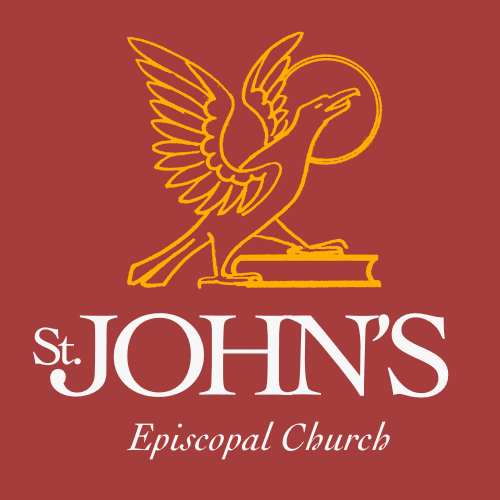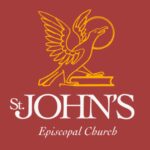The season of Advent is not to be confused with Lent. This short period is not primarily a time of penitence but rather a time to prepare joyfully for Christ’s return and his reign. The Lord’s return does indeed have a relationship to penitence, but primarily as it leads to repentance, which is an action rather than a feeling—an action of turning around and being turned around by the work of God in us. By reflecting on our lives in the light of God’s Word, we recognize the direction in which our present values and habits are leading us. Then we see that those values and ways of living must be changed. We further recognize that only the action of God can make that change in us. In the words of the Collect for the First Sunday of Advent, it is God who enables us “to cast away the works of darkness, and put on the armor of light” (The Book of Common Prayer, page 211).
In Advent the liturgy deals with contrasts: light and dark; joy and sorrow; beginning and end; and, especially, chronological time and God’s time. We discover in Advent that God’s time is of the kind described not by clocks and calendars but in terms like “the time is ripe,” or “in the fullness of time.” (See, for example, Galatians 4.) In liturgical worship Christians and our Jewish forebears and kin find time transcended in both directions. In remembering God’s saving acts in the past in prayer and thanksgiving, we find those past acts becoming present reality, and we, too, participate in them. In our liturgical rites we also look ahead to the end of time, and again our present time is filled with a foretaste of the kingdom which is yet to come.
Each of the four Advent Sundays has its own particular emphasis, and each reveals the Lord who enters into time and space, into our personal and corporate lives, whenever the “right time” occurs. As we remember, in liturgy, on each of these Sundays, ouranamnesis (Greek for “remembering, unforgetting”) becomes the means by which God’s action in what we remember becomes operative in our lives. We are likewise led to look forward in anticipation to Christ’s return (Eucharistic Prayer B, The Book of Common Prayer, page 368):
We remember his death,
We proclaim his resurrection,
We await his coming in glory.
The First Sunday of Advent is concerned with the Lord’s return as Judge of his people and of the whole created order. This is not simply a return which happens haphazardly, but neither can it be forecast by the clock or the calendar. Instead, Christ comes to each of us and to the world as he chooses, and according to his time. The character of his coming is revealed in the occasions he has come in the past. It is a gracious and loving advent, and it is judging and critical as well. Jesus encounters us not at our convenience or on demand; instead, he comes suddenly and often surprisingly. He comes to us in ways on which we can depend, such as prayer and worship, and especially in the Holy Eucharist; but he also comes when we least expect him, and often when we do not even desire him. So in the Eucharist we pray, “We give thanks to you, O God, for the goodness and love which you have made known to us in creation; in the calling of Israel to be your people; in your Word spoken through the prophets; and above all in the Word made flesh, Jesus, your Son” (Eucharistic Prayer B, BCP, page 368).
The Second and Third Sundays of Advent are focused on John the Baptist, the final prophet of Israel and the Forerunner of Christ. On the Second Sunday, John is revealed as the Forerunner, the striking figure who fulfills the last prophecies of the Old Testament. He is the human sign that the Messiah has at last come and that God’s kingdom is imminent. John cries out in the wilderness, “Prepare ye the way of the Lord.” That preparation is what the Greek-speaking writers of the Gospels calledmetanoia, which means, “change of mind” or “turning back,” and which we translate as “repentance.” The call is not to feel guilty, but to forsake that which is opposed to the reign of Christ. So we pray that day for the “grace to heed [the prophets’] warnings and forsake our sins, that we may greet with joy the coming of Jesus Christ” (Collect for the Second Sunday of Advent, BCP, page 211).
On the Third Sunday we hear more of the call to repentance from John and the call to prepare for the Messiah’s coming by living lives in keeping with the kingdom of God. We also hear John’s testimony to the ministry and significance of Jesus. Jesus is the Messiah, the one whose coming John’s preaching announces. John, the Forerunner of the Messiah (Christ), is the model for our own living. We also are to be those who announce Jesus’ coming into his world. We are so to live that “we may,” as we pray in Advent, “without shame or fear rejoice to behold his appearing” (Proper Preface for Advent, BCP, page 345).
The Fourth Sunday of Advent is concerned with Jesus’ immediate family and particularly with his mother, the Blessed Virgin Mary, and her role in redemption.
The fear of expressing reverence for Mary, which characterized many Protestant and Anglican Christians in the past, has begun to disappear as advances in biblical and historical studies have made possible a reassessment of her place in the scriptures and in the piety and doctrine of the early church. We recognize that God did not redeem us in a vacuum, apart from human participation. God brought about the Incarnation of the Son through the cooperation of a human woman with the life-giving Spirit. Furthermore, Mary’s vocation is not only to bear the God incarnate, but also to be the pattern for us as we become “God-bearers” by means of following her example of cooperation with the divine grace.
Thus, we pray on the Fourth Sunday that our consciences may be so purified that Christ “may find in us,” as he did in his holy mother, “a mansion prepared for himself” (Collect for the Fourth Sunday of Advent, BCP, page 212).
God’s time breaks into our time redemptively whenever we, in prayer and liturgy and ministry, cooperate with the divine will. It is then that the reason for honoring blessed Mary becomes clear, for we see her as the pattern for ourselves and as the first of all believers. The liturgy is always human action in union with God’s action, by which God removes the barriers between our chronological time and space, and God’s time, God’s kingdom. The liturgy is the point at which God’s Spirit draws us into the life and the presence of the saving God. It is in the liturgy that we are revealed to be the Body of Christ and to be the means by which the Incarnation is extended in time and space.
In Advent we find all our times brought together in God’s time, all our joys in God’s joy, all our lives in God’s life. In Advent we pray in these words (Eucharistic Prayer B, BCP, page 368):
We give thanks to you, O God… For in these last days you sent [Jesus] to be the Savior and Redeemer of the world. In him, you have delivered us from evil, and made us worthy to stand before you. In him, you have brought us out of error into truth, out of sin into righteousness, out of death into life.Our King and Savior now draws near: Come let us adore him.
From The Rite Light: Reflections on the Sunday Readings and Seasons of the Church Year. Copyright © 1998 by Michael W. Merriman. Church Publishing Incorporated, New York.

